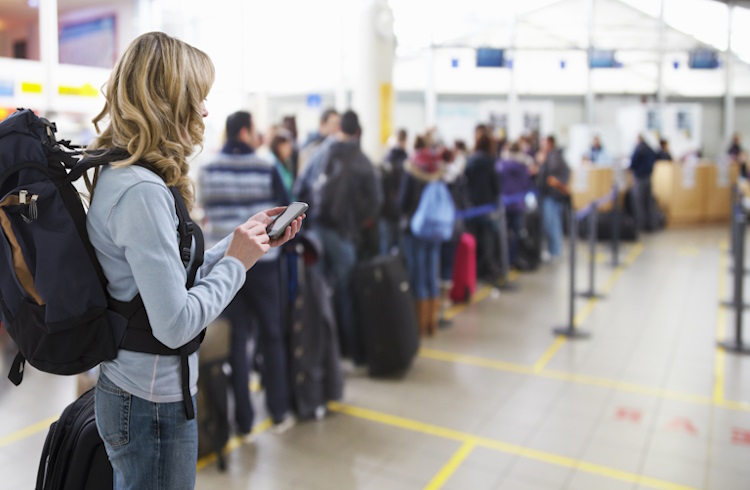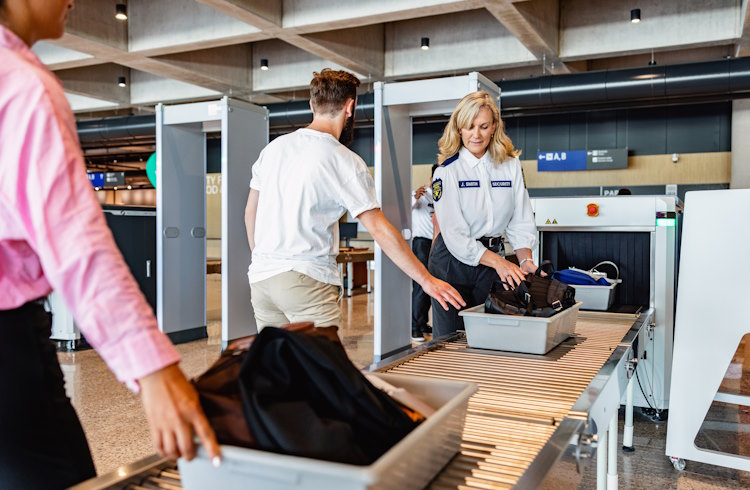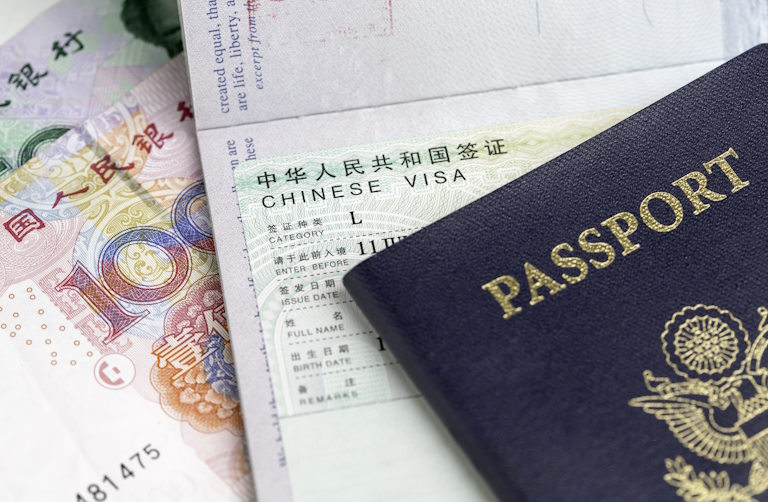What Is Global Entry? And How Does It Work?
The Global Entry program can help streamline airport security screenings when entering or departing the US. Find out who is eligible, requirements for application, and how the new Global Entry app and other technologies are helping the process move even faster.
 Photo © Getty Images / Andrew Bret Wallis
Photo © Getty Images / Andrew Bret Wallis
Entering the US can be an intimidating and tiring experience for foreign travelers. I was apprehensive when I flew into Los Angeles last year for my first US trip as an adult, anticipating long lines at immigration and stern questioning about my reasons for visiting.
Instead, I breezed through LA airport. The immigration officer who checked my passport explained I’d been lucky to complete this process so quickly – especially given I’m not a member of Global Entry, the US Government program which lets travelers fast-track their security screening upon arrival in the US.
- What is the US Trusted Traveler Program?
- How does Global Entry work?
- Who is eligible for Global Entry?
- What is TSA PreCheck?
- How does Global Entry differ from TSA PreCheck and CLEAR Plus?
- How to apply for Global Entry
- What is a Known Traveler Number?
- Drawbacks of Global Entry
- How is technology evolving Global Entry?
What is the US Trusted Traveler Program?
Global Entry is one of five services in the US Government’s Trusted Traveler Program, which aims to make it quicker and simpler for people to move into and out of the US, as well as between its states. Its services most relevant to international travelers are Global Entry and TSA PreCheck.
How does Global Entry work?
Global Entry aims to simplify customs and immigration processing for pre-approved, low-risk travelers arriving at US airports from overseas. Such travelers need not join the masses in often slow-moving immigration queues. Instead, they:
- Proceed through separate Global Entry lanes at more than 70 US airports, including tourist hubs like New York, Los Angeles, San Francisco, Las Vegas, and Miami
- Slide their passport into a digital reader at an automated Global Entry kiosk, have their photo taken, and their fingerprints scanned
- Complete a customs declaration via the kiosk touchscreen, which prints a receipt that the traveler shows to security to enter the arrivals hall
Who is eligible for Global Entry?
Global Entry is only available to people over the age of 18. They must also be citizens of one of these 14 nations: Argentina, Brazil, Bahrain, Colombia, Germany, India, Netherlands, Panama, Singapore, South Korea, Switzerland, Taiwan, UK, and Mexico.
Before being approved for Global Entry, applicants must go through a strict background check and then attend an in-person interview. Most travelers complete that interview prior to departing for the US, at a Global Entry Enrollment Center in their home country. It is also possible for Global Entry applicants who passed the background check to do their interview at the airport upon arrival in the US.
Learn more: How to renew your passport
What is TSA PreCheck?
TSA PreCheck lets people transiting through US airports access fast-track security lanes which don’t require them to take off belts, shoes, or jackets, or to remove laptops and liquids of less than 100ml from their luggage. Only US citizens and US permanent residents can apply for TSA PreCheck as a standalone service. Citizens of partner countries who are enrolled in the NEXUS or SENTRI Trusted Traveler programs can also participate in TSA PreCheck.
And both foreigners and US citizens get TSA PreCheck membership as part of the package when they join Global Entry. This means they can not only move through US airports faster on arrival, but also during departure from US airports on domestic or international flights.
How does Global Entry differ from TSA PreCheck and CLEAR Plus?
- Global Entry streamlines your passage through US airports upon arrival in the country. It costs USD $120 for a five-year membership.
- TSA PreCheck offers a simpler departure experience from the US.A membership costs UDS $78 for five years.
- CLEAR Plus is an alternative to TSA PreCheck, but is run by a private company, not the US Government.
Like TSA PreCheck, CLEAR Plus offers easier security screenings when departing from US airports. Instead of lining up to show airport staff your ID, you use a faster-moving CLEAR Plus channel where you’re identified via eye or fingerprint scanning. The downsides of CLEAR Plus: it’s not available to non-US citizens and residents, and it costs USD $189 per year.

How to appy for Global Entry
- Create your personal account on the Trusted Traveler Program (TTP) website. Click the “Create an account” button and enter your email address.
- You’ll then be sent an email – open it, click on the verification link within, and follow the instructions for creating a personal TTP account.
- Once your account is created, you’ll see an option to apply for Global Entry. In this application you will need to provide personal information such as age, place of birth, citizenship status, employment status, your passport data, any criminal record, and details of any previously rejected applications for US Visas or entry permits.
- During the subsequent interview, which typically lasts between 10 and 30 minutes, you’ll be asked to present ID documents, and to explain your reasons for visiting the US.
A shorter, less stringent interview is required to get approved for TSA PreCheck. This in-person appointment takes roughly 10 minutes, during which the staff member will take your photo, scan your fingerprints, confirm your ID documents, and take your payment for the application.
What is a Known Traveler Number?
The most important detail of Global Entry or TSA PreCheck membership is your Known Traveler Number (KTN). This is the nine or 10-digit number assigned specifically to you once your membership to one of these services is approved.
When booking domestic or international flights via US airports, you must type your number into the KTN box during the reservation process. This will ensure that you’re listed as being TSA PreCheck or Global Entry-approved on your boarding pass, which will give you access to the fast-track lanes.
Find out how travel insurance can help when things don't go as planned on your travels – such as lost luggage, cancelled flights, or unexpected illness.
Drawbacks of Global Entry
The only downsides to Global Entry membership are the cost – $120 for five years – and the slow application process. After completing your application and interview, it can take anywhere from a month to almost a year before you receive membership.
Depending on where you live, there can also be significant delays in booking the in-person interview. Beware, also, that the membership fee is non-refundable if your application is rejected.
How is technology evolving Global Entry?
Phone apps, self-service security stations, and facial recognition are being used in US airports to improve Global Entry and TSA PreCheck services. In 2024 the US Government launched its Global Entry app, which lets members submit their passport details and photo so that, on arrival in the US, they can skip the Global Entry lane and proceed straight to the final airport security checkpoint.
Departure security processes are also being updated. Self-servicing screening technology, being slowly rolled out at US airports, allows TSA PreCheck members to use kiosks where they can scan their ID and carry-on luggage by themselves. Also being gradually implemented at more and more US airports is TSA PreCheck technology which uses facial recognition to identify travelers, instead of ID documents.


1 Comment
How do you renew the global entry once you have it? So they notify you? Do you have a link to renewal or do you have to go back to an international airport?